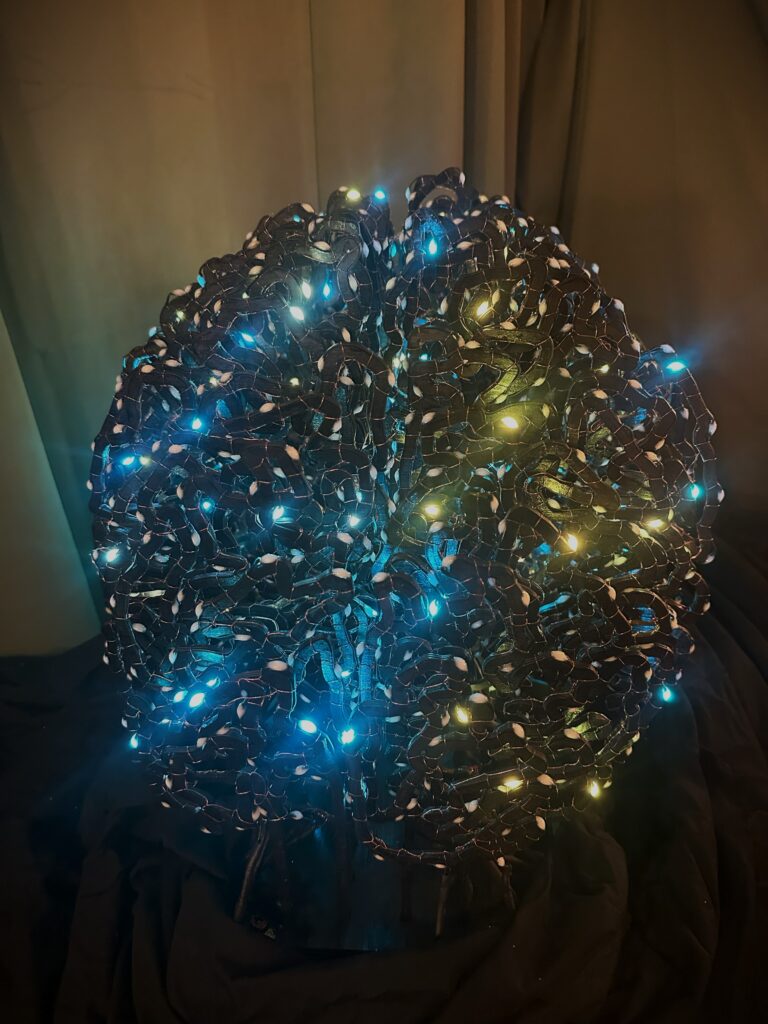The progression of a laser cut piece to a volumetric light sculpture.
I was fortunate during the pandemic to have access to a space where I could be alone and just create. Just before the start I’d met a friend at a festival who was very into LEDs and he came to Nashville to teach a LED Pixel Mapping workshop just weeks before lockdown started, and that inspired me to think of shapes that would be interesting to animate graphics on.
In January of 2021 I found a 3D model of someone’s brain scan on Thingiverse and sliced it up in blender. I then pulled the outlines into Illustrator and outlined them – and fed the little laser I was working with piece after piece of wood – a total of 50 slices in all.
I’d become a little obsessed with making a brain – as a young woman in my neighborhood had expressed to me she wanted to study the brain. So we’d endeavored to find ways for her start building some foundational knowledge, even though she was a few years away from college. (This piece is dedicated to her.)

As 2021 went on, I proceeded to go just a little bit stir crazy. I packed the project up and put it into a storage unit. My landlord planned to sell my apartment and I didn’t want to move to another address in the same city – I wanted something different. So for the next year I worked on figuring that out.
I moved to New England. That LED expert friend of mine became my partner and we found we collaborate pretty well on building LED projects together with TouchDesigner and teaching them together as workshops. So almost 5 years after I’d started the project, I took it out, fixed it up, painted it black and hand-wrapped 1800 LEDs onto it using copper wire that my dad gave me when I was in art school. The technology for LED bullet lights was there – and I had a relatively solid understanding of the hardware and sofware needed to map a volumetric pixel array.
Being in New England made it easy to drive up to Montreal for festivals. I met Nora Gibson at the same TouchDesigner event that I’d met my future partner at in 2019 – and as it turned out, she had similar fascinations with creating brain-related art. She had used a headband-type device to produce audio patches and was interested in sharing her work to go along with the piece.